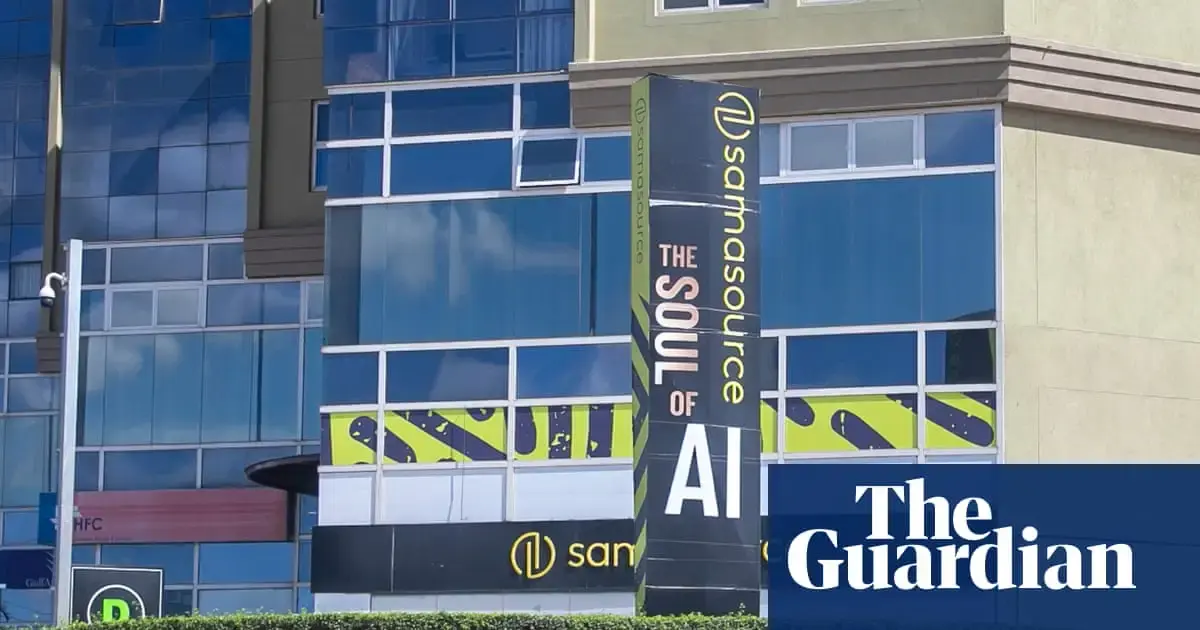Employees say they weren’t adequately warned about the brutality of some of the text and images they would be tasked with reviewing, and were offered no or inadequate psychological support. Workers were paid between $1.46 and $3.74 an hour, according to a Sama spokesperson.

Cool. Using slave labor to train tools to strip the best parts of humanity away from us so that AI can do creative activities like poetry and art while we’re more and more stuck in a gig economy.
Cool cool cool cool.

so that AI can do creative activities
Let me stop you right there. The current concept of “AI”–otherwise known as Large Language Models because that is really what people are referring to–is not capable of creativity. ChatGPT and things like it just regurgitate stuff they find. They can’t create something new and original

It creates things. Whether it is truly “creative” in the sense that humans are “creative”, doesn’t really matter. Now, you might respond by saying that it only regurgitates, but I would argue that many if not all human creative outputs are, at least to some degree, “regurgitations” in the same sense. I am not disregarding art, just saying that art is always derivative to some degree.

It doesn’t really matter though. It will take away jobs from people in creative industries that only creative people were able to do before. The end result is basically the same.

Why would AI that can’t be creative take jobs from people that are capable of being creative?

Because it’s not the AI that’s taking away jobs, but the executives hoping to cut costs regardless of creativity, quality, or ethics.

So then blame the real problem, which is not new and has always been the main enemy: capitalism and its demand for seeking profits despite any consequences.
That has nothing to do with “AI” and still doesn’t have anything to do with the original claim of whether or not the new wave of LLMs are capable of creativity.

I am. That’s the thing that I’m blaming. The claim I was making was that OpenAI has engaged in violent colonialism inherent to capitalism with the goal of making Elon rich, and the rest of us poor.

Bookmarking isn’t the same as boosting, but it’s the best I can do. Keep screaming it from the rooftops my dude, dudette, or non binary doodling

Because businesses dont want to pay for labor. They dont care about what quality we get as consumers

I know it’s not. That’s why it’s so sad that people are offloading creative work to it

It is true that LLMs and DPMs do not create, they interpolate – that’s why training data and curation of that data is so critical to begin with. Nevertheless, it is correct to say they are being used for “creative activities” as cheap and (in my opinion) unsustainable substitutes for human minds.

AI is about at creative as Adobe Photoshop is, or a pencil for that matter. A human operating it (no, not txt2img prompting) is where the creativity comes from.

tools to strip the best parts of humanity away from us so that AI can do creative activities like poetry and art
Yeah that’s a bullshit take on AI

But that’s exactly what’s happening. Bloodsucking capitalists have decided that AI is a cheaper option than paying people a living wage, so creatives are losing their jobs.
Instead of actually learning how to create art, shitbag grifters claim theyre “taking the power back from creatives” and doing nothing but stealing from actual creatives to make some sort of soulless synthesis, leaving actual creatives high and dry. For just one example, look at how many publishing outlets have stopped taking submissions because of the overwhelming flood of AI spam.
All the while people are out here trying to make ends meet and are being forced into shitty, low paid jobs or gig work

I think he/she was referring to the sole purpose of AI being developed is to create an additional subscription model that serves both ads and bullshit, locked to infrastructure of google or metas choice.

Your complaint here is entirely with capitalism and has nothing to do with AI. It’s a legitimate concern, but it;s fart larger problem than new ways of making pictures. Aim your opprobrium at the correct targets

spoiler
sdfsaf

There’s nothing to elaborate on. It’s a stupid position put about by luddites and perpetuated by people with no understanding of the subject. It’s so not on target it’s not even wrong!

I’m a DevOps engineer. I work with big technology every day. I am very definitively not a Luddite. But the way the capitalists controlling our economy view and want to use AI is harmful to us, the lower and middle classes. I’m not sure which part of my view is so stupid that it enters into psuedoscience, leading me to not even being wrong

You’re so close. Keep going. Where’s the root cause of the problem?

I could not make it any clearer I think the root cause is capitalism. That you’re putting the focus elsewhere is exhausting

No I agree. Keep going… Why are you therefore daemonising AI rather than focusing your ire where it belongs?

spoiler
sdfsaf

Why not?

The average cost of living is somewhere around $650 for one person, and those wages are a bit low but the higher end is above average for the country.
(I don’t know how accurate this data is, but based on https://livingcost.org/cost/kenya/United-States)
I’m not saying they shouldn’t be paid better or more, but those wages aren’t as outlandish as they sound for the country.
- Hot Saucerman ( @dingus@lemmy.ml ) English16•11 months ago
And here I must be crazy thinking if it is US company paying them, maybe they deserve the equivalent of US employees, no matter what the fucking local pay is.
That “local pay” bullshit is just an excuse to exploit. Pay them what you would have to pay a US citizen for the same job or fuck right off. They don’t deserve less because of geographic location.

To be honest, this isn’t an AI problem, but a content moderation and labor force ethics problem. You can swap out AI with social media and you’ll find the same amount of psychological harm to moderators.

Is there anything that can be done to make content moderation less traumatizing? ~Strawberry

Good question! It’s probably the most psychologically damaging job out there.
Ironically, maybe with AI? But that would mean we would have to train a model to recognize the worst images and videos possible…which means gathering all of that data…which means whomever trains that model will be scarred…actually, maybe not a good idea…

So nothing?.. ~Strawberry

It’s a tough problem to solve! It’s definitely beyond my expertise.
This is the best summary I could come up with:
The 51 moderators in Nairobi working on Sama’s OpenAI account were tasked with reviewing texts, and some images, many depicting graphic scenes of violence, self-harm, murder, rape, necrophilia, child abuse, bestiality and incest, the petitioners say.
“We are in agreement with those who call for fair and just employment, as it aligns with our mission – that providing meaningful, dignified, living wage work is the best way to permanently lift people out of poverty – and believe that we would already be compliant with any legislation or requirements that may be enacted in this space,” the Sama spokesperson said.
In sample passages read by the Guardian, text that appeared to have been lifted from chat forums, include descriptions of suicide attempts, mass-shooting fantasies and racial slurs.
The announcement coincided with an investigation by Time, detailing how nearly 200 young Africans in Sama’s Nairobi datacenter had been confronted with videos of murders, rapes, suicides and child sexual abuse as part of their work, earning as little as $1.50 an hour while doing so.
She wants to see an investigation into the pay, mental health support and working conditions of all content moderation and data labeling offices in Kenya, plus greater protections for what she considers to be an “essential workforce”.
I’m a bot and I’m open source!

A bot giving a summary of an article about people doing the work to train AI bots is some real snake-eating-its-own-tail shit.

Thankfully this one doesn’t require AI. You can generally find the most important sentences in an article by counting the occurrences of every unique word, throwing out the common articles (e.g. a, an, the), and then extracting the sentences which contain the most frequently used words.
- shiveyarbles ( @shiveyarbles@beehaw.org ) 17•11 months ago
Imagine seeing furries in action for the first time.

